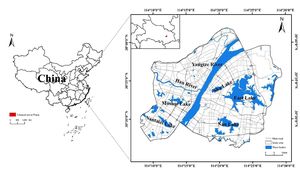A novel mechanism has emerged for SN2 reactions, challenging long-held conventions and demonstrating significant enhancements brought about by Lewis base phase transfer catalysts (PTCs). Researchers have revealed the contact ion-pair (CIP) mechanism, fundamentally altering the traditional view of nucleophilic substitution reactions.
Published on February 2, 2025, this comprehensive study utilizes advanced 19F-NMR spectroscopy to empirically investigate and corroborate the CIP pathway. This pathway provides superior efficiencies and yields, addressing many deficiencies associated with classical SN2 methodologies. Key to this mechanism’s success lies within its ability to significantly mitigate the deleterious effects often imposed by counter-cations.
For decades, the SN2 mechanism has been characterized by straightforward back-side attacks from nucleophiles, where reactions typically follow predictable pathways. This simplicity, largely dictated by textbook depictions, may no longer paint the full picture. Recent findings indicate more complexity, with the presence of ion pairs fundamentally influencing reactivity.
The research showcases several prototype systems, effectively illustrating how utilizing metal salts activated by specific PTCs can lead to notable advancements. The investigators detail how metal fluorides, such as KF and CsF, interact with Lewis base PTCs like [2,2,2]-cryptand and 18-crown-6—catalysts known for their effectiveness.
When comparing the typical solvent-separated ion pair mechanisms with PTC-influenced CIP scenarios, outcomes crystalize: the use of less commonly employed alkali metal salts dramatically changes expected reaction profiles. Remarkable improvements were documented, with SN2 reactions achieving yields often exceeding 85%. By using 19F-NMR spectra as integral diagnostics, the study confirmed the prevalence of CIP forms over solvent-separated configurations under certain conditions.
Through specific experimental models, the researchers elucidate how, for example, the [2,2,2]-cryptand not only serves as a catalyst but can actively engage and mitigate counter-cation interactions, allowing nucleophiles to operate with reduced hindrance. “The role of the [2,2,2]-cryptand as a PTC is very important here: The O atoms of [2,2,2]-cryptand 'capture' the counter-cation K+, rendering the adjacent nucleophile F- freer from the retarding influence of K+,” highlights the study’s findings.
This study’s findings urge reinterpretations of historical perspectives on SN2 reactions. The traditionally held views seem simplistic when juxtaposed with results amplifying the complexity and efficiency derived from incorporating the CIP mechanism. The optimization it introduces could lead to the reengineering of organic synthesis protocols, broadening the horizons for applications within various chemical landscapes.
Concluding this groundbreaking exploration, the lead investigators hope to inspire the design and synthesis of more effective Lewis base promoters. Their findings open avenues for advancements not only within SN2 reactions but also across diverse nucleophilic processes, cementing the CIC mechanism as pivotal for optimizing chemical transformations.



